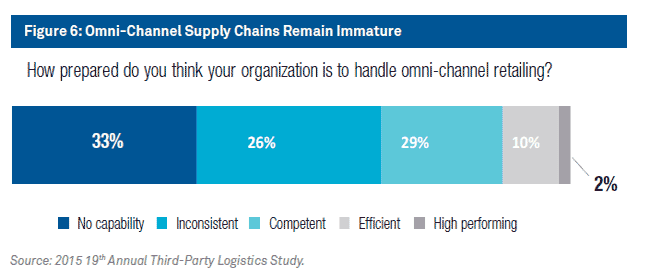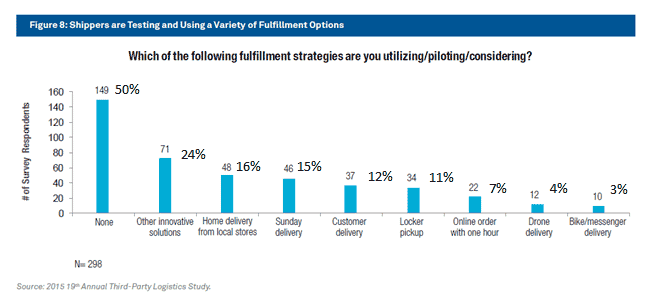From SCDigest's On-Target E-Magazine
- Oct. 7, 2014 -
Supply Chain News: Highlights from the 19th Annual Third-Party Logistics Study Part 2
Special Focus in Omni-Channel, Talent Management, Use of CRM by 3PLs and Mexico
SCDigest Editorial Staff
As always, the Annual Third Party Logistics Study was unveiled at the CSCMP annual conference two weeks ago in San Antonio.
Once again, as for all nineteen years of the study, the effort was led by Dr. John Langley of Penn State, supported this year by study sponsors Capgemini, Penske, and Korn Ferry.
As is generally the case, the study is in effect broken into two sections: the first half focused on the survey data obtained from several hundred shippers and 3PLs, while the second half drills down into a set of themed topics chosen each year.
SCDigest Says: |
 |
| American trade with Mexico has grown by nearly 30% since 2010 to $507 billion annually, and Goldman Sachs reports that Mexico is on-track to become the fifth largest global economy by 2050. |
|
What Do You Say?
|
|
|
|
Last week, we summarized the first half of the report, with perhaps the most notable data coming out of the survey perhaps being that there are signs that the growth in 3PL spending has hit a ceiling. (See Highlights from the 19th Annual Third-Party Logistics Study.)
In general for many years, spending on 3PLs has grown faster than the overall economy, true usually in every part of the world. That in turn generally meant that shippers were outsourcing higher and higher percentages of their logistics spend.
But for this year's report, based on 2013 data from Armstrong & Associates, that long term trend certainly took a pause. 3PL revenues in North America grew only 2.9% last year. While we don't have a GDP figure for all of North America, nominal US GDP grew 3.4%, half a percentage point faster than overall 3PL spending across the US, Canada and Mexico.
3PL spending in Europe was flat, aligned with a generally flat economy as well.
Meanwhile, shippers reported devoting 36% of their total logistics spend to 3PLs, according to the study's survey, down sharply from the 44% in 2012 and 42% in 2011.
Has the 3PL growth train reached it limits? That is a very interesting and important question that won't be answered of course by one year's set of data. There were some modest changes in the survey methodology that could account for at least some of the delta in reported 3PL spend as a percent of the total, or the results could be a one year statistical blip that will not be seen in next year's data. So the 2016 report will likely be scrutinized closely to see if that is the case, or if there is a real trend going on here.
Focus Topic Sections
The focus theme areas were: omni-channel retailing and fulfillment; workforce management; use of CRM and mobile/Cloud systems by 3PLs in the sales process; and logistics in Mexico.
The omni-channel section doesn't plow a lot of new ground in terms of all that has been written about this topic and the related one of efulfillment, so we are going to concentrate on some of the data points, which were interesting.
The study received survey responses from a rather sizable group of retailers, whose responses show how early most are in this game (keep in mind, however, that this is a global survey - retailers by region are not broken out).
As can be seen in the figure below, only 10% of retailers believe they are "high performing" in terms of omni-channel, while one-third say they have little or no capabilities and another 26% say their performances is "inconsistent."

"For many companies, the issue is their existing infrastructure simply cannot support a true omni-channel," the report notes.
The survey also asked retailers what types of "new age" efulfillment strategies they were either using or testing. The results of that question are shown in the graphic below, though the report itself oddly didn't calculate the percentages, just the raw numbers, so we have calculated and added those percentage numbers:

As can be seen, still a relatively low percentage of retailers are actively engaged in any of these fulfillment types, though we wish the report had included more detail relative to the "other innovative solutions" many retailers said they were pursuing.
Given the context of the report, we also wish this section had brought more of a 3PL/outsourcing slant to it, addressing head on the pros and cons of outsourcing efulfillment versus doing it in house, a topic that was not really addressed, with perhaps some examples of retailers doing it each way.
(Distribution/Materials Handling Story Continues Below
)
|